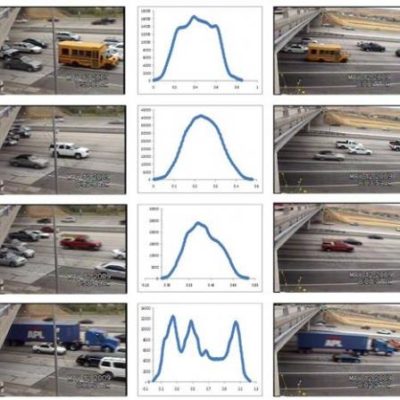Inductive loop detection systems are currently the most invested technology for obtaining traffic data in the United States and are widely deployed on most major freeway networks. With continuing emphasis on transportation sustainability, there is an increasing need to obtain more accurate and comprehensive traffic system performance measures such as section travel time, origin-destination, and vehicle classification. In this Small Business Innovative Research (SBIR) study for USDOT, CLR Analytics researchers, advised by Prof. Stephen Ritchie, explored the emerging inductive loop signature technology.
We investigated the applications of the technology to vehicle re-identification and vehicle classification along a freeway section and also its potential application to the arterial network and OD estimation. Our proposed real-time vehicle re-identification algorithm was found to have reliable performance on vehicle re-identification and provide more accurate section travel time measurements than point detector based methods. Our proposed real-time vehicle classification algorithm, which was developed based on wavelet transform and k-nearest neighbor algorithm, was found to provide a high-performance vehicle classification solution based on FHWA vehicle classification scheme.


The Phase I project successfully demonstrates that the inductive loop signature technology is able to provide more accurate performance measurements and has the potential to become a key component for advanced traffic management and traveler information systems. The project provides a comprehensive development and evaluation of a real-time inductive loop signature based vehicle reidentification and vehicle classification system. With the implementation of the loop signature-based vehicle tracking system, the potential benefits to the national transportation system are as follows:
In Phase II, we will design and develop a cost-effective loop signature card for data collection, enhance the vehicle reidentification and classification algorithms investigated in Phase I, and develop a high-definition traffic performance monitoring system (Traffic Monitor HD) for both freeway and arterial applications. Traffic Monitor HD has a web-based interface for real-time traffic monitoring, historical performance analysis, and report. Compared to the traditional performance measurement system, Traffic Monitor HD provides more accurate performance measurements, such as travel time, vehicle class, estimates on emission, and alerts on problematic detectors. To commercialize Traffic Monitor HD, we will develop a commercialization strategy plan to rapidly move the proposed system to widespread commercial use. We will also demonstrate the capability and the applicability of the system in real-world implementations.
Sponsor: USDOT/RITA/Volpe Center
Project Time Period for Phase 1: September 2010 – April 2011
Project Time Period for Phase 2 (Ongoing): April 2013 – Jun 2016
